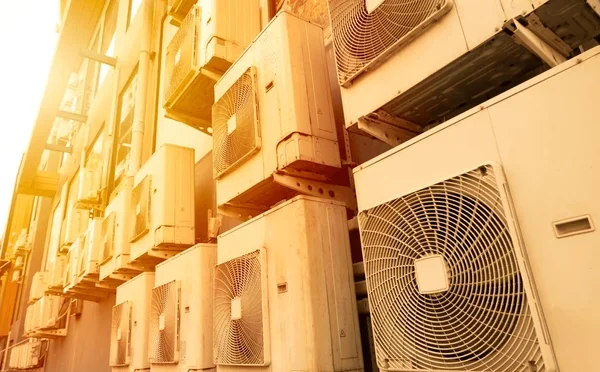The cooling trap: How our air conditioners are heating the planet
The cooling trap: How our air conditioners are heating the planet

Take a look around today, and you’ll notice a striking similarity across almost every building: white air conditioner units clinging to each floor. But this wasn’t the scene during our childhood.
A few decades ago, such units were far less common. Naturally, this raises a question: were heatwaves as intense back then as they are now? The simple answer is no.
Many people see air conditioners as the solution to hotter weather. But using them might actually make things worse. ACs move heat from inside our homes to the outside, which makes outdoor temperatures rise, especially in busy cities. The more we use ACs, the more heat we add outside, which makes us use them even more. This creates a cycle that keeps making the problem worse.
Over the course of 20 to 30 years, this contributes to significant changes in the global climate. Eventually, the atmosphere may become so warm that engineers will no longer be able to design air conditioners capable of effectively cooling indoor spaces. Unknowingly, we are destroying our planet, and yet this critical issue remains largely unaddressed.
Let’s dive deep into it. To understand the relation between increasing temperature and air conditioners, we need to understand a bit of physics here. Okay, hold on, you don’t need to know rocket science. The cooling cycle has four main steps, and a fluid called refrigerant is used in this cycle. Here it goes—
Evaporator: An extremely cold refrigerant is used in the cooling system. It absorbs heat from inside the room and changes into a low-pressure gas. This cools the room down. The air flows inside the air conditioner, and when it comes in contact with the cold refrigerant, it releases heat, and the refrigerant absorbs the heat. A very basic law of physics is that heat passes from a high-temperature object to a low-temperature object. The refrigerant becomes a vapor after absorbing the released heat in this step.
Compressor: The compressor squeezes the low-pressure gas into a high-pressure gas. Here Boyle’s law works—pressure is proportional to temperature, and this eventually raises the temperature more than the outside air temperature so it can be released outside. Because again, heat passes from a high-temperature object to a low-temperature object.
We need to understand the vicious cycle here. Imagine the atmospheric temperature is 25°C and the refrigerant inside the AC is 24°C. In this simplified illustration, the air conditioner will not effectively release the heat outside unless it’s hotter than the surrounding air. So, the AC works by raising its internal temperature to 26°C to release the heat. Let’s assume for this example that the atmosphere absorbs this emitted heat and its temperature rises to 26°C.
In the next cycle, the AC must increase its temperature to more than 26°C to continue cooling. This process is simplified to make it easier to understand, but it demonstrates how continuous AC usage contributes to a cycle where the atmospheric temperature gradually increases.
Source: Internet
Condenser: The condenser releases the high-temperature gas outside. Because this gas is hotter than the outdoor air (for example, if outside is 25°C, it might be released at 26°C or more), it raises the temperature outside.
Expansion Coil: This part lowers the pressure of the refrigerant, turning it back into a low-pressure liquid to start the cycle again. This process is the opposite of the second process in terms of increasing and decreasing the pressure. After it turns into a low-pressure gas, the cycle repeats.
Therefore, the more we use ACs, the more we harm the Earth. This is the vicious cycle we’re trapped in: the atmosphere becomes hotter, so we buy more ACs. We use our air conditioners more frequently, which increases the heat in nature and compels us to rely on even more air conditioning. How long will this cycle continue? If you read the article above carefully, you should understand that there will theoretically come a time when the outside temperature reaches 100°C and we will need to set our air conditioning to 101°C. Even though that’s not possible, it should make you realise we are destroying our own world.
The solution isn’t to suffer. The solution is to defeat this cycle with sustainable engineering and alternative inventions. We need to rethink how we can design our buildings and cities for natural cooling. Are such solutions already available? Widely? No. Possible? Maybe. But that’s not enough. We urgently need to invest in widespread research, experimentation, and deployment of such technologies. Otherwise, we are digging our own grave.


